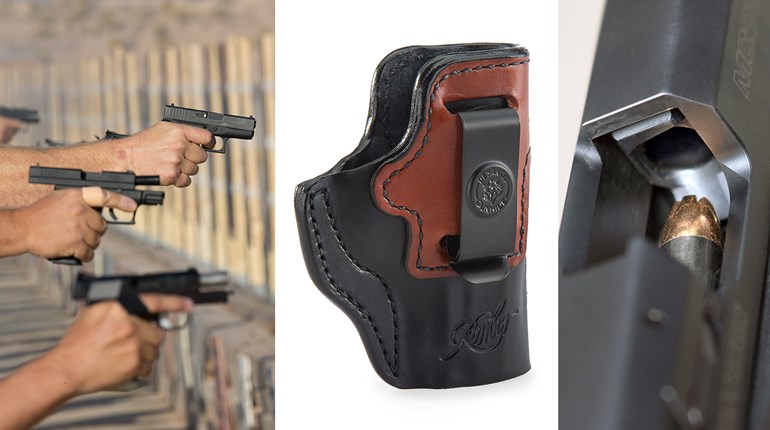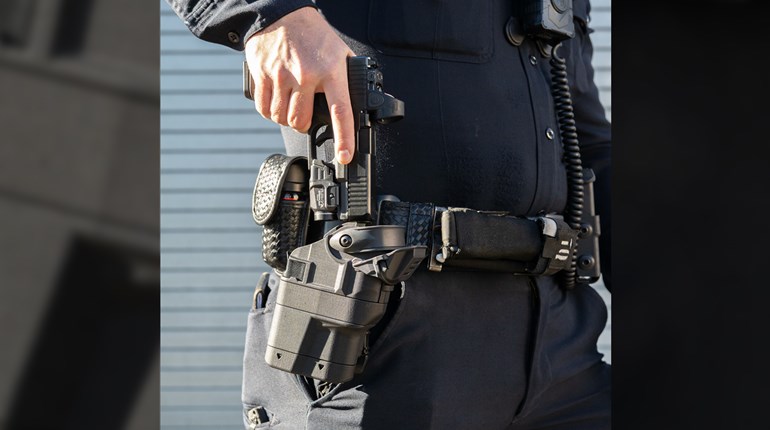
I suppose folks who commute in and out of big cities see some example of road rage just about every day. It may be caused by a combination of fatigue, frustration and simply childish behavior. Whatever the cause, in its simplest form road rage makes for very hazardous driving conditions. In its worst form, it can lead to violence and possibly a defensive-shooting situation. Here are some thoughts on how to deal with what can be a very dangerous encounter.
A defensive driver should always be in Condition Yellow when operating his vehicle—the same Condition Yellow Col. Jeff Cooper said would help us identify potential threats. By making ourselves stay alert, we are more aware of what is going on around us. As drivers, we constantly watch other drivers and look for bizarre behavior. But, Condition Yellow also keeps us from changing lanes in front of a car we didn't see, or cutting someone off at an exit. In short, it helps keep us from causing a situation in which another driver might lose his cool.
Once you spot a potential road-rage problem, it might be a really good idea to change lanes or do whatever it takes to give the fool some room and hope he goes on about his business. It is critical you not lose your temper, too. To be enraged means an individual's judgment is severely impaired. A person who carries a defensive handgun should never be in this sort of condition. This also means we don't exchange that well-known gesture rarely meant as a friendly greeting. Keep your hands (and fingers) inside the car and on the steering wheel.
Should the enraged driver fail to leave you alone and go on about his business, the important thing to remember is the best defensive weapon you have is the vehicle you are sitting in. The vehicle is your best ticket out of a potentially deadly situation. If you see a police car along the side of the road, now is the time to pull in behind him and let the law deal with that fool. Another technique might be to just drive to the nearest police station, assuming you know where it is. Failing that, you should exit and head for the nearest well-lit area full of people.
The defensive driver's second-best weapon is the cell phone. Once it appears the angry driver is not going to disengage, call 911. Give a description of your car (you do know your license plate number, don't you?) and as good a description as possible of the offender's vehicle. Once you've contacted the 911 dispatcher, stay on the line and follow his/her instructions. When you see the police have stopped the suspect vehicle, pull to the side of the road a fair distance away—about 50 yards would work—and wait for the officers to contact you. Do not exit your vehicle and do not approach the police or suspect's vehicle unless the officers instruct you to do so. Since you are still on the line with the dispatcher, let the officers know you are the one who called for help and await their instructions.
Just about the worst action would be to avoid calling the police and simply stop and try to settle things. One word leads to another. Witnesses will probably not know you consider yourself the victim. What they're going to see and what they're going to tell the police when they call is that there are two people fighting. They might tell the police that one or both of you have weapons. The thing to remember is police officers usually have more than one set of handcuffs, and you have probably just won a free trip to jail.
Most road rage can be dealt with by keeping your cool, letting the angry motorist go on his way and, failing that, calling the police. Occasionally, however, this doesn't solve the problem. What you think is road rage may actually be a carjacking. Or, the car may be occupied by street-gang types who think you need some physical attention. Even in this case, if your vehicle is operable, use it to get away from the bad guys or at least make them chase you until the police arrive.
Only if you have been run off the road and your car will no longer run should you consider using your defensive handgun. Even then, your car is your best friend.
Keep in mind the front of a vehicle, with its engine block and assorted gizmos, is really good cover. It will stop a lot of bullets. Just don't get caught sitting in your car behind the steering wheel. It is much better to quickly exit the vehicle and take protective cover. Let the bad guys come to you. Move away only when there is a lull in the fight and better cover has been located close by.
Since you have made it a point to have a cell phone, called 911 and took the phone with you when you exited the car, the police will have a pretty good idea of what is going on. However, when they arrive you should not have a gun in hand. You may lay it in the seat of the car or on the hood, just don't have the gun in your hands if you can possibly avoid it. Make it a point to do what the officers tell you.
This may involve getting face down in the gravel. It will also probably involve being handcuffed and handled in a rough manner. Live with it. In time, if you've followed the law and truly are a victim, this will ease up a bit. If the incident has involved shooting and there are bodies lying around, you should expect to go to jail. At that point, contact your lawyer, as you would in any other shooting situation, and follow his instructions.
You might notice I have not suggested you do any shooting as long as your car is operative and running. I can tell you, from first-hand experience, shooting from a moving vehicle is not very accurate. You tend to miss a lot. Remember you will be held accountable for every shot you fire, even the misses. If the car will run, it's far better to have both hands on the wheel and try to drive out of the situation.
In dealing with a bad road-rage incident, as in all other defensive situations, using a firearm should be a last resort. And, as in all defensive situations, the smart person has thought about it ahead of time and developed a plan of action. Prior planning and preparation keeps a person from becoming a victim.



































